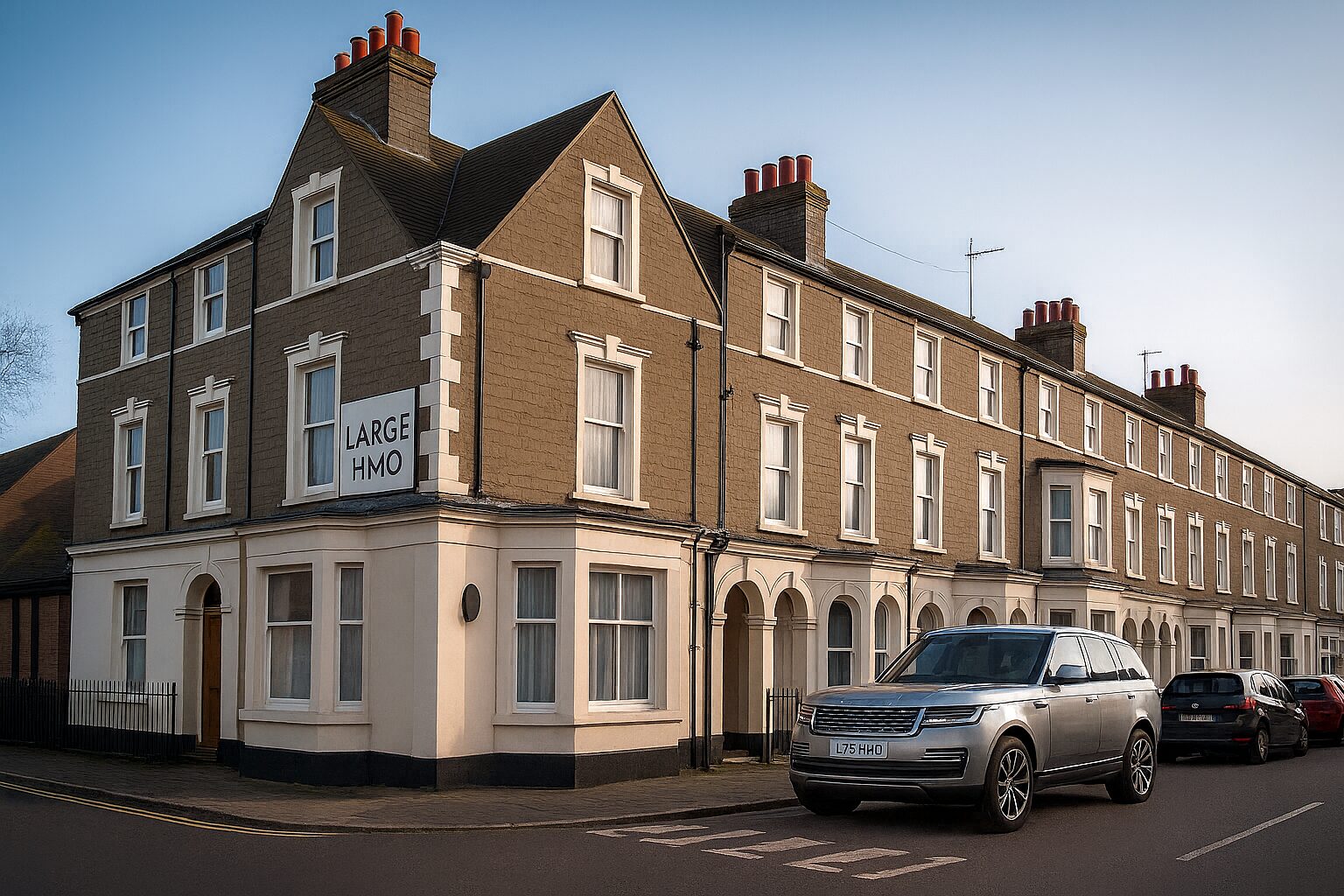
Local authorities run routine inspections on houses in multiple occupation (HMO) as a matter of course. They do so before granting a licence to a landlord and regularly thereafter to check that you’re complying with, among other issues, fire safety, space and amenity provision rules.
In this article, find out what licensing requirements the law expects you to meet and how to get ready for your next HMO inspection.
HMO Architects tip: Consider implementing an HMO planned preventative maintenance program on your property. This will help you spot problems early on before they become a bigger problem that might attract the attention of an HMO inspector.
Who do councils run HMO inspections on?
Councils can inspect both licensed HMOs and, under the Housing Health and Safety Rating System (HHSRS), any rental property, including HMOs that don’t need a local authority licence.
An inspector will visit your HMO if you’re applying for or have:
- Mandatory licence: This is if your HMO has five or more occupiers in two or more households.
- Additional licence: Certain councils run additional licensing schemes. In these areas, smaller HMOs, often with three or four people, still need a licence and they will inspect your premises.
Can a council inspect my HMO if it doesn’t need HMO licensing?
If you don’t need a licence, there’s no routine licensing inspection regime. But councils can still inspect any HMO under the Housing Health and Safety Rating System (HHSRS). So, there’s no licence to take away but they still have these powers under the Housing Act 2004:
- Forcible entry: Section 239 inspections require inspectors to provide you and your tenants with 24 hours’ written notice. If you refuse access or there’s an urgent risk, the council can seek a magistrate’s warrant under section 240 to gain forcible entry.
- Document requests: You may get a written request for documents like gas safety certificates and EICRs under section 235. Failure to comply is a criminal offence under section 236.
- Improvement notices: The council can issue an improvement notice if your HMO is in poor condition or a risk to safety. Category 1 hazards are serious and Category 2 less serious. The notice will tell you what needs fixing and by when.
- Prohibition order: The council can ban or restrict use of a whole property, part of it or limit how many people can live there. The order usually comes into force 28 days after it’s made. If you appeal within 28 days, it’s on hold until the tribunal decides. If you fix the issue that led to the order, ask the council to revoke or vary it. They must revoke it once they’re satisfied the hazard no longer exists.
- Emergency prohibition order: Emergency prohibition orders apply to Category 1 hazards. This is when there is an immediate and serious risk to health or safety. They take effect immediately. You must stop the prohibited use straight away. You can appeal within 28 days but the order remains in force unless a tribunal overturns it. When you remove the hazard, ask the council to revoke or vary the order. They must revoke it if they’re happy you’ve removed the problem.
- Emergency remedial action: If there’s a Category 1 risk, the council can send in contractors to fix it straight away under section 40. They then send you the bill.
- Fines and penalties: The council can take enforcement action. They can issue a civil penalty notice of up to £30,000 or prosecute you, leading to an unlimited fine.
HMO Architects note: The term HMO means different things in planning law and housing law. Under the Housing Act 2004, it’s a legal definition used for licensing and management. But in planning law, HMOs fall under Use Class C4. If you’re changing a property from a normal home (Class C3) to an HMO (Class C4), that’s normally allowed. This is because it is a permitted development right. But if the council has brought in an Article 4 Direction, you’ll need to apply for planning permission instead.
The HMO inspection checklist: 5 ways to get inspection-ready
The council will send you notice that they want to carry out an official inspection. Ideally, you should be there to accompany the inspector around your property at the scheduled time. If you can’t, give your HMO manager access to all the documentation.
During the visit, the inspector will check and verify:
- The condition and status of your HMO’s communal spaces and each occupied room
- Your certifications and internal records, like gas safety certificates or fire alarm logs
If they only find minor issues, the inspector sends you an informal list of actions to complete with target dates.
If you don’t fix them, councils usually escalate the situation to a legal notice (like an Improvement Notice). It’s then your statutory duty to carry them out by a fixed deadline. Fail to do so and you risk civil penalties, prosecution and restrictions on how you use all or part of your HMO.
If an issue is so bad at first inspection that it’s classed as a Category 1 hazard, they may go straight to an Improvement Notice.
Here are the five main areas of concern during the inspection process you need to get right.
1. HMO fire safety measures
There is a national baseline for fire safety methods although many councils add on extra conditions. It’s always a good idea to use LACORS as your starting point as well as the advice of your architect.
The following are the essentials to check so your property achieves the necessary HMO fire safety regulations:
- Escape routes: Protect and keep them clear at all times. Provide house signs indicating where the exits are. Provide and test emergency lighting in line with BS 5266 where routes are long/complex or lack borrowed light. [Related article: Emergency Lighting Requirements & Regulations Explained]
- HMO fire doors: Fire doors must be 30-minute (FD30/FD30S) self-closers with combined smoke and intumescent seals. Fit them to rooms leading onto the escape route and to the kitchen door. Keep them shut and in good repair.
- Fire extinguishers and blankets: Place these in suitable positions like a shared kitchen and bedsits with cooking.
- Other fire precaution equipment: To protect your tenants, you may have invested in extra reasonable precautions like water-mist systems or approved hold-open devices linked to the alarm. That’s great but service them regularly so they’re in working condition.
To save time, you or your managing agents should have this paperwork to hand during a regular inspection:
- Annual alarm and emergency lighting certificates
- Logbooks that contain details on weekly fire-alarm tests, monthly emergency-lighting tests and annual full-duration tests
2. Gas, electrical and energy certificates
The local council inspector will usually want to see the following documents and may require copies:
- Gas safety: Provide a Gas Safety certificate for the gas appliances you supply to the property and keep each record for 2 years. Remember, you need to give the record to existing tenants within 28 days and new tenants before they move in.
- Electrical safety (EICR): Produce an Electrical Installation Condition Report (EICR) to show the fixed wiring in your HMO meets the PRS 2020 Regulations. You need an EICR test every five years. Your report may show items graded as C1 (“danger present: risk of injury), C2 (“potentially dangerous”) or FI (“further investigation”). If so, complete the remedial work or further investigation needed within 28 days (or any shorter period stated). Get written confirmation from the electrician that you’ve done the work and give that confirmation to the council and tenants within 28 days. If you don’t have the EICR to hand and the inspector requests it, get it to them within seven days. Also, keep evidence that you completed the required work and sent the documents. [Related article: HMO Electrical Requirements & EICR Regulations Explained]
- Energy Performance Certificate (EPC): You need a valid EPC (where required) for letting. The MEES (minimum energy efficiency standard) is EPC band E, unless your property is exempt. Many councils ask for an EPC in the HMO licence pack or as a licence condition. If you let individual rooms, you generally don’t need an EPC for each room but you will need one if you let or sell the whole dwelling.
- CO alarms: Inspectors expect to see smoke alarms on each storey used as living accommodation. You’ll also need them for rooms with a fixed combustion appliance (not gas cookers).
- PAT: Portable-appliance testing for shared appliances is not a statutory requirement but many councils make it a licence condition.
[Related article: Boiler & Gas Safety Requirements for HMO Landlords]
3. Space, amenities and facilities standards
There are minimum room sizes in HMO properties that landlords are legally required to provide for licensed HMOs.
A single adult sleeping room must be at least 6.51 m², a double 10.22 m² and a child under 10 needs 4.64 m². For unlicensed HMOs, the council can still order you to stop using a room that’s too small as a bedroom under HHSRS powers.
Tenants also need adequate amenities and sanitation facilities for the number of occupiers. Amenity ratios vary by council so use your local standards as the benchmark. Here are the guidelines on the provision of amenities according to occupancy
| Number of persons | Bathrooms required | WC/WHB required | Notes |
| 1–4 | At least 1 | At least 1 (may be combined with bathroom) | Bathroom and WC can be in the same room |
| 5 | At least 1 | At least 1 separate WC with WHB | The second WC can be inside a second bathroom |
| 6–10 | At least 2 | At least 2 separate WC with WHB | One WC can be inside a bathroom |
| 11–15 | At least 3 | At least 3 separate WC with WHB | Two of the WHBs can be inside bathrooms |
Shared kitchens also must offer enough appliances, worktop and storage for everyone. Amenities requirements vary so check your council’s HMO guide.
4. Waste, refuse and external areas
Inspectors want safe, orderly management of waste that doesn’t block exits or attract pests to an area.
To meet the HMO Management Regulations (Regulation 9) and HHSRS “Domestic hygiene, pests and refuse” guidelines, focus on the following:
- Waste disposal facilities: Supply enough lidded, labelled bins inside and outside for the number of tenants. Make sure the bin types and capacities match the local council’s where you have to supply them.
- Litter storage: Show the inspector which bin each type of rubbish goes in and the collection days tenants put them out on. Take them where tenants place bins for collection when pending disposal.
- Keep routes and boundary walls safe: Don’t place bags or bins on escape routes. Maintain your boundary walls, fences, rainwater goods and gardens so they stay in a sound and tidy condition.
- Run a clean, pest-resistant bin store: Keep your bin store covered and hygienic, only putting bins out on collection day and returning them promptly.
- Provide evidence for inspections: Add your waste plan to the house rules and label containers so the property meets licensing and management requirements. Councils can require you to comply with their local waste scheme under 2018 national HMO licensing conditions.
- If the local authority fails to collect: Put bins out at the next collection, arrange removal if needed in line with the council’s service, and let the council know. This shows how you manage refuse if the council doesn’t pick it up.
5. Remaining issues
Inspectors also look for signs that the property is well run overall and that you take your legal duties seriously. Have these documents ready for them:
- Compliance and paperwork: Have each occupier’s written tenancy agreements to hand. Keep records on whether tenants are multiple tenants for different families or the same family. You must display the landlord/manager’s name, address and telephone number in a prominent position in the HMO. Keep a pack showing how your property adheres to HMO regulations and its other legal obligations. As a landlord, it’s good housekeeping to be able to present any relevant information to comply with a council request quickly.
- Condition and maintenance: The internal structure and finishes must be sound and the heating must work in every room. Keep a clear property maintenance schedule so you are maintaining compliance on issues like damp and mould. [Related article: HMO Heating Regulations & Solutions]
- HMO management routines: Effectively carrying out your property management responsibilities is key. Record events like quarterly inspections, weekly fire checks and monthly alarm tests in a logbook. Make notes of what an inspector checks on each visit as well as what you agreed and the deadlines. Keep copies of emails, photos and evidence as this is your proof that you did as you were advised.
HMO Architects: helping HMO landlords meet and exceed inspection requirements
Councils do conduct regular inspections to make sure HMO landlords are complying with safety standards. The effort is worth it though because HMOs offer the best return on rented residential property, compared to standard buy-to-lets and holiday lets.
Partner with HMO Architects to protect your current investment and build a profitable portfolio of HMO properties. We have helped over 750 investors, developers and landlords at all stages, from the initial idea through to HMO licensing and beyond. We have a 97% success rate in securing HMO compliance for clients across over 200 councils.
HMO showcase: case studies
Here are three of our most recent HMO projects for clients:
- Fletcher Street, Manchester (12 rooms): We transformed an abandoned nightclub into a 12-bed Sui Generis HMO, opting for two storeys with larger rooms over an approved extra floor. We planned compliant layouts, integrated the fire strategy, and delivered a scheme that moved to a strong commercial valuation with robust monthly rental.
- Court Way, London (12 rooms): We re-planned an end-of-terrace Victorian property into a high-spec multi-let with en-suites and kitchenettes in every room. Our design used hip-to-gable and dormer changes plus rear and full-width ground-floor extensions to unlock space for professionals without compromising flow or compliance.
- Hobart Road, Cambridge (12 rooms): We set up a terrace as a six-bed HMO with a clear route to add a seventh room later, using a ground-floor and dormer extension to future-proof the layout. The scheme bakes in HMO standards from day one so inspections and management stay straightforward.
HMO Architects services
We offer clients a start-to-finish, featuring services like:
- Investment strategy calls: Ryan Windsor was 17 when he began building his own extensive property portfolio. He’s helped over 2,200 clients across his career. Book a strategy call with Ryan and get bespoke advice on how to increase your net value and income with HMO properties.
- Feasibility study: Giovanni Patania is our Architect Director. He and his team are available to talk to you on all pre-buy and design feasibility issues related to a property purchase you have in mind. This includes factoring in compliance costs like fire safety measures and carbon monoxide alarms.
- End-to-end service: Access a range of key services under one roof. We provide architecture design and planning to building regs and interior design. The experts you need are all in one place.
- Wider network: Plug into our pool of trusted professionals. Access experts like property development finance brokers to arrange a competitive HMO mortgage at the best possible mortgage interest rates. Find the best accountants to help you extract the maximum tax benefits and take advantage of every tax deductible. If you want to manage your own HMOs, get in touch with specialist letting agents who can help you with issues like tenant screening and general property self management.
Check out our detailed HMO legal FAQ and find out more about the true cost of unlicensed HMOs on our website. Discover whether HMOs, buy to lets or stocks and shares deliver the best return. When you get in touch, ask Ryan about his BRRR method and how to use it as your investment strategy.
View our range of development finance case studies to see how we’ve helped clients turn their ideas into sound investments. Read customer stories on HMO, flat, holiday let and housing projects.
Frequently asked questions
What is a house in multiple occupation?
A house in multiple occupation (HMO) is a type of living accommodation occupied by three or more people who form more than one household. In most properties, tenants share facilities like bathrooms, toilets and kitchens. They are a key part of the UK rental market and help meet demand for affordable, flexible housing in towns and cities.
Who needs an HMO licence?
If your HMO has five or more occupiers in two or more households, you need a mandatory HMO licence. Children count towards the total.
Giovanni is a highly accomplished architect hailing from Siena, Italy. With an impressive career spanning multiple countries, he has gained extensive experience as a Lead Architect at Foster + Partners, where he worked on a number of iconic Apple stores, including the prestigious Champs-Élysées flagship Apple store in Paris. As the co-founder and principal architect of WindsorPatania Architects, Giovanni has leveraged his extensive experience to spearhead a range of innovative projects.




